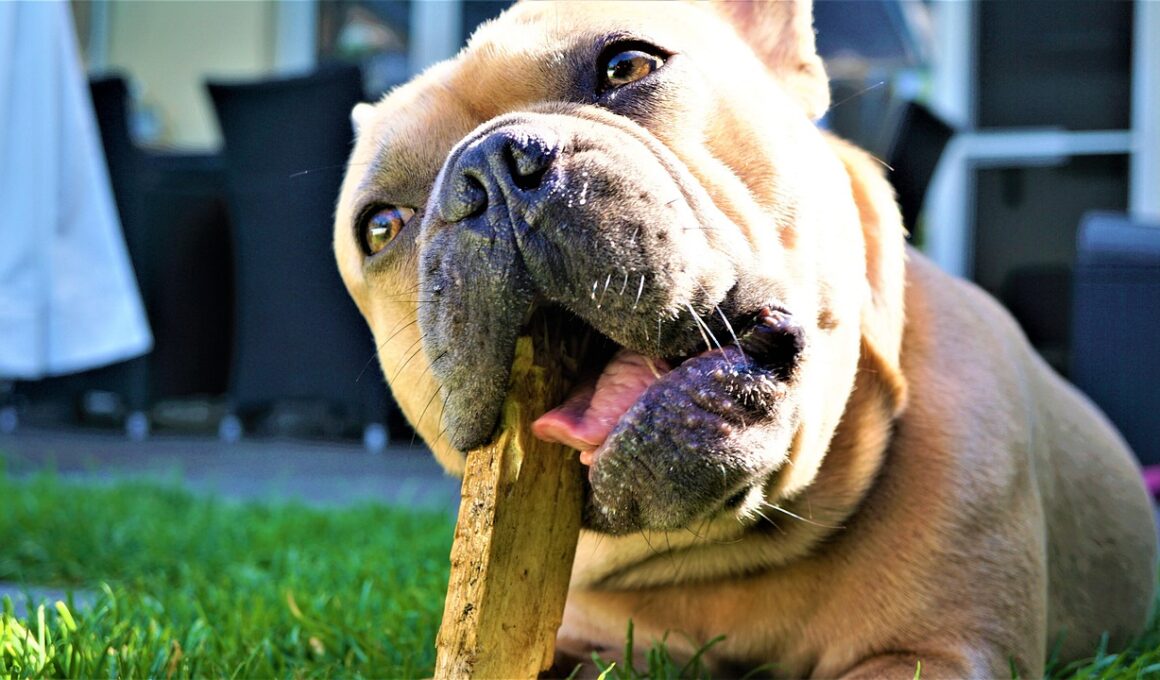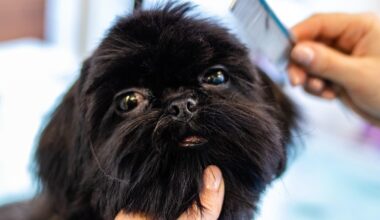How Coat Type Correlates to Dental Health in Dog Breeds
Dog dental care is more crucial than many pet owners recognize, but awareness is gradually growing. Different dog breeds exhibit unique predispositions toward various dental health issues which correlate closely with their distinct coat types. For instance, breeds that have longer, thicker coats often face more significant dental challenges, due to the maintenance routines that often overlook oral hygiene. Regular brushing and checks are crucial for these breeds to prevent serious conditions. Moreover, the structure of a dog’s mouth can be influenced by its coat type, leading to dental alignment problems that necessitate a veterinarian’s attention. Some breeds are naturally prone to periodontal disease, which can be exacerbated by inadequate grooming practices related to their coat type. Obscured dental hygiene in such breeds could lead to complications, like infections and tooth loss. Therefore, understanding the relationship between coat type and dental health can assist pet owners in taking proactive steps. Investing time and resources into a breed-specific dental care regimen is essential for promoting good health for dogs. This tailored approach can significantly enhance the life quality of your furry friends.
Understanding Breed-Specific Dental Issues
Every dog breed does not experience the same issues with dental health. Certain breeds, particularly those with shorter muzzles and skull shapes, may have more challenging dental care needs. For instance, brachycephalic breeds, such as Bulldogs and Pugs, often exhibit overcrowded teeth due to their compressed facial structure. This overcrowding can lead to an increased likelihood of plaque buildup and gum disease. On the other hand, long-nosed breeds might not face those same constraints but can still benefit from specific dental care needs revolving around coat maintenance. Notably, owners should also be aware of specific foods that may exacerbate oral conditions. Some kibble may cause buildup due to textures that don’t adequately clean the dogs’ teeth as they chew. Additionally, breeds with notable coat types like the Yorkshire Terrier may require special attention to dental hygiene alongside coat grooming practices. Regular dental check-ups by veterinarians are equally critical for these breeds. Adopting a comprehensive dental care routine is truly integral for these breeds, especially those prone to past issues, ensuring they maintain healthy teeth and gums throughout their lives.
The understanding of how coat types affect dental care also extends to complications that arise from untreated dental problems. For dogs with long and flowing coats, especially those requiring regular grooming, owners may neglect the importance of dental checks. Generally, these coats attract more dirt and can retain bacteria, which can eventually affect a dog’s dental health. Additionally, breeds with dense fur, such as Shih Tzus, may have a predisposition to developing tartar on their teeth, partly due to their grooming routines being uncoordinated with oral hygiene practices. Moreover, pet owners should be particularly cautious around food types that could contribute to dental buildup for these dogs. Maintaining a balance between grooming their coat and checking their teeth is essential for the long-term health and happiness of the dog. One suggestion is to schedule their grooming appointments alongside dental vet visits. This dual approach can streamline the process, not only saving time but also enabling the owner to remain vigilant about their dog’s overall health. Informed pet owners can adopt strategies to ensure comprehensive care for both their dog’s coat and teeth.
Impact of Diet on Dental Health
The diet play a critical role in managing dental health across different dog breeds. Various types of dog food have been designed specifically to promote dental hygiene, helping to reduce plaque and tartar buildup. For example, dry kibble often has a texture that can support cleaning teeth as dogs chew. This enhances dental cleanliness, especially for breeds like Retrievers that may face dental challenges due to their playful and active eating strategies. Moreover, incorporating dental chews and toys can contribute significantly to a canine’s oral care while also ensuring they engage in play, which promotes overall well-being. Pet owners should also be conscious of that each dog’s coat type might necessitate varying dietary approaches. For instance, a breed with a heavier coat may need slightly different nutrition than a sleek, short-haired breed to maintain a balanced diet. Additionally, nutritional deficiencies can lead to gum disease among other issues. It’s crucial to tailor diet choices accordingly, particularly focusing on providing a diet rich in antioxidants to support oral health standards. Without careful attention to diet, many dogs can develop health issues related to their distinct breed characteristics.
Routine veterinary dental care is also paramount in maintaining dental health in all breeds, especially those requiring specialized treatment. Regular dental check-ups can help catch dental health issues early, making treatment much easier and less costly for both the pet and owner. The veterinarian can recommend specific cleaning procedures based on coat type and breed characteristics, ensuring the cleaning process is thorough and beneficial. Moreover, dog owners should remain informed about any dental problems known to be associated with their specific breed, and seek advice on how to effectively mitigate these issues through at-home dental care. For instance, certain breeds may benefit more from water additives to combat plaque than others. Additionally, brushing at home should become a daily routine for dog owners. Frequent brushing can help mitigate issues before they escalate, particularly for breeds prone to dental diseases. Using pet-friendly toothpaste and brushes significantly adds to the efficiency of this process. By being proactive and involved in dental care, dog owners can help protect their dogs from common dental problems that could lead to significant health challenges over time, therefore improving quality of life.
Best Practices for Grooming
Grooming practices must align closely with maintaining good dental health in dogs. For breeds with thicker coats, regular brushing can also become an opportunity to check for dental issues, increasing awareness among pet owners. When grooming, visually inspecting a dog’s mouth may catch early signs of gingivitis or other dental concerns. For those breeds with exceptionally dense fur or long hair, it is crucial to create a consistent grooming schedule that pairs brushing the coat with dental hygiene checks. This care can prevent serious dental problems down the line and educate owners about their dogs’ ongoing needs. Additionally, using specialized grooming tools can help improve not only the coat but also make dog owners aware of any changes in their dog’s oral health. Regular vet visits should be complemented with proper home care routines to provide a dual-layered approach that emphasizes dental care just as much as coat care. As a part of this routine, including treats that promote dental health can also support overall oral hygiene endeavors. Following these best practices can significantly enhance the effectiveness of grooming and contribute to healthier, happier dogs.
In conclusion, understanding the correlation between coat type and dental health in dog breeds is essential in maintaining proper health practices. Pet owners play a significant role in mitigating potential dental problems through choosing appropriate grooming habits and nutrious diets. Each breed has distinctive traits that require different levels of attention to dental care. Therefore, customized approaches become vital, ensuring that both the dog’s coat and dental hygiene routines are effectively managed. By integrating specific dietary practices tailored to a breed’s characteristics, owners can enhance overall health outcomes, reducing the frequency and severity of dental problems. Moreover, conducting regular vet visits can help establish a complete care routine that captures all aspects of health maintenance. Keeping an eye on dietary intake combined with brushing schedules can mitigate risks significantly associated with dental decay. Pet owners should not underestimate the importance of these practices. The bond between grooming routines and dental health not only promotes a happier, healthier dog but contributes positively to their quality of life. Thus, investing time in these areas will undoubtedly pay off, reflecting in the vitality and joy of your beloved canine companion.


